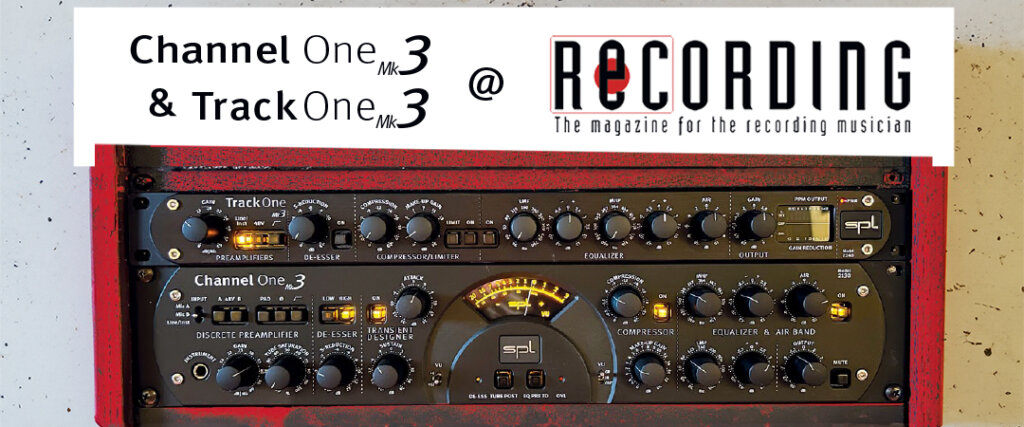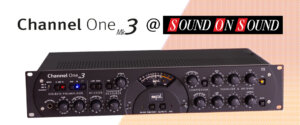In US pro audio magazine Recording you’ll find a review of the newest generation of SPL Channel-Strips – Channel One Mk3 and Track One Mk3. Here we provide a short summary.
Channel One Mk3:
“The SPL Channel One Mk3 is a comprehensive front-end channel strip with some unique tone-shaping capabilities. Newly added to the Mk3 signal chain is the famous SPL Transient Designer. Initially released in the late 90s, the Transient Designer was created to shape the attack and sustain of any source. It quickly became a popular ‘secret weap-on’ for engineers to get a tight and punchy drum sound.”
Track One Mk3:
“The SPL Track One Mk3 is a streamlined 1U version of the Channel One Mk3. It features the transistor-based preamp, de-esser, compressor and EQ sections from its larger sibling but loses the tube stage and the Transient Designer. In place of the VU meter, there is an LED output and gain reduction indi-cator in 1.5dB steps. Interestingly, the compressor offers more functionality than the Channel One Mk3. In addition to the two-knob compressor, it can also function as a soft limiter, with the compression knob still controlling the threshold. The back panel also includes a stereo link master/slave, making it easy to daisy chain two Track One units together for stereo compression.If you don’t need the tube stage or Transient Designer, the Track One is a great way to attain the same pristine sound quality for less money in a compact 1U format.”
Channel One Mk3 – Transient Designer:
“If you aren’t familiar with the SPL Transient Designer, it was released in the late 1990s and uses Differential Envelope Technology (DET) to shape any source’s attack and sustain. If you want a source to sound tighter or drier, rolling back the sustain to negative values almost functions as a de-reverb. Inversely, adding sustain brings out the natural characteristics of your room. Attack can be added to make a source sound punchier, or it can be rolled back to have something present slightly looser or softer. I’ve been using the original four-channel 9842 Transient Designer for as long as I can remember. One of my favorite applications is on drum room mics – rolling back the attack while cranking the sustain brings out the room’s character, which sits in the full drum mix much more naturally compared to adding a secondary reverb. Including it on the channel strip should prove beneficial in any number of contexts, such as making hip-hop vocals punchier and drier as one example.”
Compressor:
“In use, I found the compressor as advertised! Its character is neutral yet musical, and even when I tried, I had a hard time getting an overly grabby sound out of it. It’s simple to use and effective at controlling dynamics, especially when tracking.”
Tube Saturation:
“Adding tube saturation creates thickness and grit, and it responds well when pushed into higher settings. I loved using it on electric guitars, as the saturation added a satisfying sense of depth.”
Conclusion:
“The Channel One Mk3 is truly the kitchen sink of modern front-ends.”
“It’s an SPL “greatest hits” of time-tested processors that can help audition mics, tame any S, add saturated character, get creative with transients, add air and more.”






